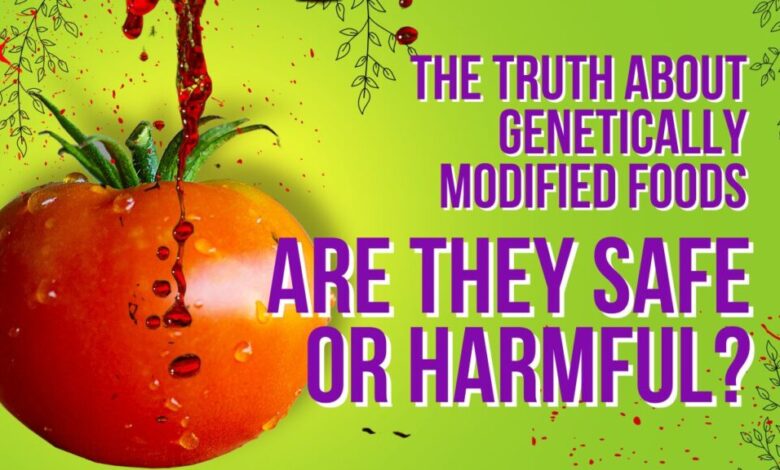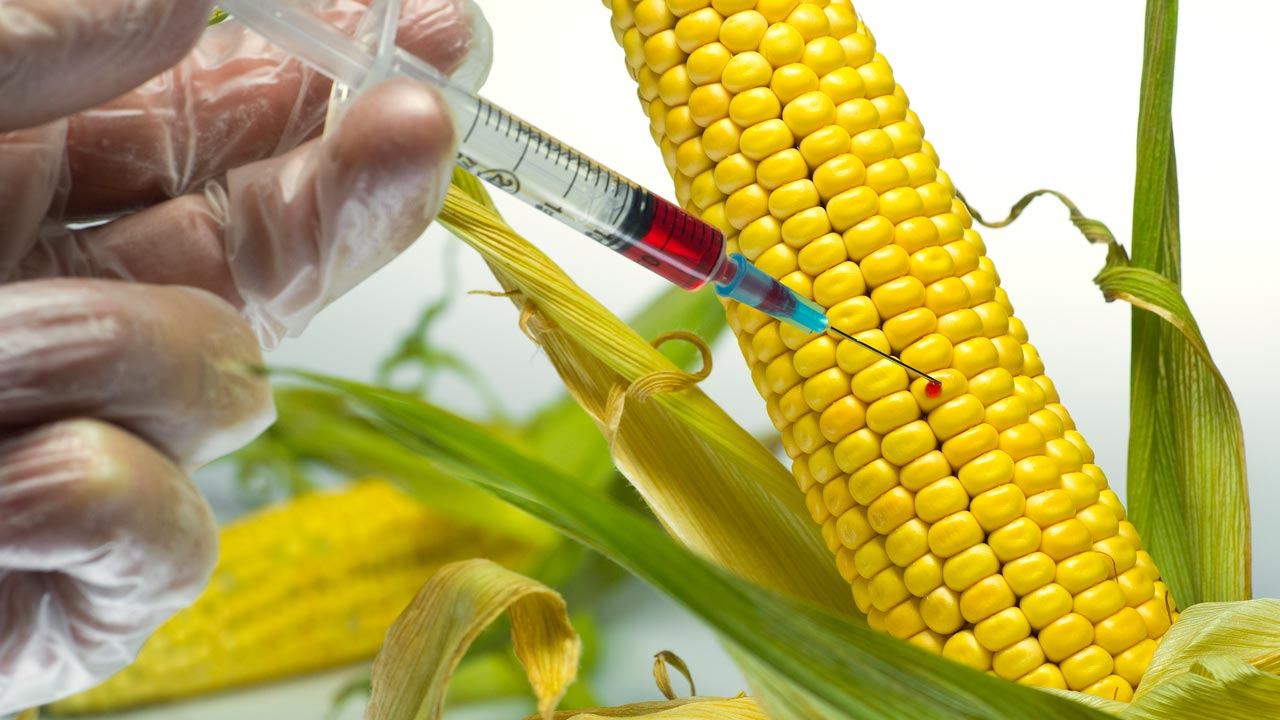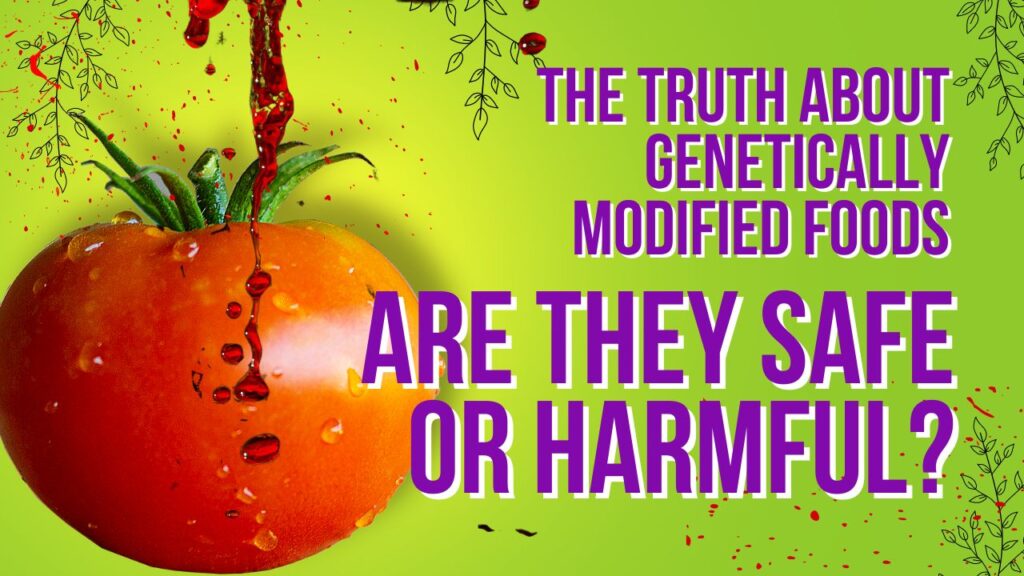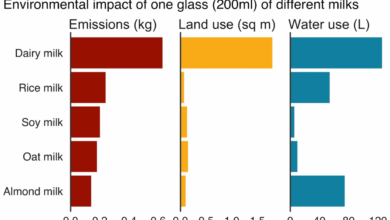
Experts Debate: Should You Eat GMO Foods?
Experts debate should you eat gmo foods – As experts debate whether or not you should eat GMO foods, a whirlwind of questions swirls around this controversial topic. Genetically modified organisms (GMOs) have revolutionized agriculture, promising increased yields, reduced pesticide use, and enhanced nutritional value. But concerns linger about potential health risks, environmental impacts, and ethical implications.
This debate touches on the very core of our food system, raising questions about safety, sustainability, and the future of our food supply.
The debate surrounding GMOs is complex and multifaceted, involving scientific research, ethical considerations, and consumer perception. Understanding the nuances of this issue requires delving into the science behind genetic modification, evaluating the potential benefits and risks, and exploring the role of regulatory frameworks in ensuring food safety.
What are GMOs?

Genetically modified organisms (GMOs) are organisms whose genetic material (DNA) has been altered using biotechnology techniques. This alteration is done to introduce new traits or enhance existing ones, making the organism more desirable for various purposes.
The Process of Genetic Modification
Genetic modification differs significantly from traditional breeding methods, which involve selecting and crossing organisms with desirable traits over multiple generations. GMOs are created through direct manipulation of an organism’s genes, often involving the insertion of specific genes from other organisms.
This process typically involves the following steps:
- Isolation of the Desired Gene:Scientists identify and isolate the gene responsible for the desired trait from a donor organism. This gene might be from a different species, such as a bacterium, fungus, or even another plant.
- Gene Insertion:The isolated gene is then inserted into the target organism’s genome. This is often achieved using vectors, such as viruses or plasmids, which act as carriers for the gene.
- Selection and Regeneration:Cells that successfully incorporate the new gene are selected and grown into new plants or organisms. These genetically modified organisms now possess the desired trait.
Examples of GMO Crops
Here are some common examples of GMO crops and their characteristics:
| Crop | Modification | Benefits |
|---|---|---|
| Corn | Resistance to herbicides, increased insect resistance | Reduced reliance on pesticides, increased yield |
| Soybean | Herbicide tolerance, increased oil content | Simplified weed control, higher oil yield |
| Cotton | Insect resistance | Reduced pesticide use, improved fiber quality |
| Papaya | Resistance to ringspot virus | Protection from a devastating disease |
Benefits of GMO Foods
Genetically modified organisms (GMOs) have been a subject of intense debate for decades, with concerns about their safety and potential environmental impacts. However, GMOs also offer several potential benefits, particularly in the realm of agriculture and food security. This section explores these benefits and the scientific evidence supporting them.
Increased Crop Yields
Increased crop yields are a significant benefit of GMOs. By introducing genes that enhance resistance to pests, diseases, and herbicides, GMO crops can thrive in challenging conditions and produce more food per unit of land. For example, Bt corn, a GMO variety, produces its own insecticide, reducing the need for chemical sprays and increasing yields.
It’s a hot topic, isn’t it? Experts debate whether GMO foods are good or bad for us. While we’re on the subject of health, why not try this your 9 minute total body bodyweight workout ? It’s a great way to get your blood pumping and feel energized, no matter what you decide about GMOs.
A 2014 study published in PLOS One found that Bt corn adoption in the United States led to a 15% increase in corn yields. This increase in yield translates to more food for a growing global population, potentially mitigating food shortages and ensuring food security.
Reduced Pesticide Use
GMOs can contribute to reduced pesticide use, benefiting both the environment and human health. By incorporating genes that provide pest resistance, GMO crops require fewer chemical treatments, leading to decreased pesticide residues in food and a lower environmental footprint. A 2016 study published in the journal Nature Biotechnology found that the adoption of Bt cotton in India led to a 37% reduction in pesticide use, resulting in improved farmer health and reduced environmental pollution.
This reduction in pesticide use is crucial for protecting biodiversity and reducing the risk of pesticide resistance in pest populations.
Enhanced Nutritional Value, Experts debate should you eat gmo foods
GMOs can enhance the nutritional value of food crops, addressing dietary deficiencies and improving public health. For example, Golden Rice, a GMO variety, has been engineered to produce beta-carotene, a precursor to vitamin A. Vitamin A deficiency is a significant public health concern, particularly in developing countries, affecting millions of children and adults.
Golden Rice has the potential to significantly reduce vitamin A deficiency and improve overall health, especially in areas where access to vitamin A-rich foods is limited.
Food Security and Sustainability
GMOs can contribute to food security and sustainability by increasing crop yields, reducing food waste, and promoting efficient resource utilization. With a growing global population and increasing demand for food, GMOs offer a potential solution to ensure food security for all.
By enhancing crop resilience and productivity, GMOs can help meet the growing food needs of a rapidly expanding population. Additionally, GMOs can contribute to sustainable agriculture by reducing the environmental impact of farming practices. For example, drought-resistant GMO crops require less water, reducing the strain on water resources and promoting water conservation.
The debate on whether or not to consume GMO foods is heated, with valid points on both sides. One thing that’s clear, though, is that how you break your fast can significantly impact your body’s response. If you’re considering intermittent fasting, it’s essential to learn the dos and don’ts of breaking an intermittent fast , as this can affect your overall health and how your body processes food, including GMOs.
Ultimately, the decision on whether or not to consume GMO foods is a personal one, but understanding the potential effects of different dietary choices is crucial.
Concerns about GMO Foods
While GMO foods offer potential benefits, they also raise concerns about their impact on human health, the environment, and ethical considerations. These concerns have led to ongoing debates and scrutiny surrounding their safety and sustainability.
Potential Health Risks
Concerns about potential health risks associated with GMO foods are a major point of discussion. While extensive research has been conducted, some individuals remain apprehensive about the long-term effects of consuming genetically modified organisms.
- Allergenicity:One concern is the potential for GMOs to trigger allergic reactions. The introduction of new proteins into food crops could potentially cause allergic responses in susceptible individuals. However, rigorous testing and labeling regulations are in place to minimize this risk.
- Toxicity:There are concerns about the potential for GMOs to produce toxic substances or increase the levels of existing toxins in food. While some studies have suggested possible links between GMOs and toxicity, the evidence is not conclusive, and regulatory bodies continue to monitor these potential risks.
- Antibiotic Resistance:Some GMOs contain genes that confer resistance to certain antibiotics. This raises concerns about the potential for these genes to transfer to bacteria in the gut, leading to antibiotic resistance in humans. However, the risk of gene transfer is considered low, and regulatory agencies closely monitor the use of antibiotic resistance genes in GMOs.
Environmental Impacts
The environmental impacts of GMOs are a subject of debate, with concerns about their potential effects on biodiversity, pesticide use, and the emergence of resistant pests.
- Biodiversity:One concern is the potential for GMOs to negatively impact biodiversity, particularly through the spread of transgenes into wild populations. This could lead to the displacement of native species or the creation of invasive species. However, research has shown that the risk of gene flow is generally low, and strategies are in place to mitigate this risk.
- Pesticide Use:GMO crops, particularly those engineered for herbicide resistance, have led to increased herbicide use. This raises concerns about the potential for herbicide residues in food and the environmental impacts of herbicide use, such as water contamination and soil degradation.
- Pest Resistance:The widespread use of GMOs resistant to certain pests can lead to the emergence of resistant pest populations. This could require the development of new pesticides or other pest management strategies.
Ethical Implications
The development and use of GMOs raise ethical questions about the ownership of genetic material, the potential for unintended consequences, and the right to informed consent.
- Intellectual Property Rights:The patenting of GMOs raises concerns about the control of food production and the potential for large corporations to monopolize the seed market. This could limit access to seeds for small farmers and hinder agricultural diversity.
- Unintended Consequences:The long-term consequences of genetic modification are not fully understood. There is a risk of unforeseen consequences, such as the creation of new allergens or the emergence of resistant pests.
- Informed Consent:Some individuals argue that consumers have the right to know if their food contains GMOs and to make informed choices. Labeling regulations vary around the world, and the debate continues about the importance of transparency and consumer rights.
Regulatory Framework for GMO Foods: Experts Debate Should You Eat Gmo Foods
The global regulatory landscape for genetically modified organisms (GMOs) is complex and varies significantly across countries and regions. Regulatory frameworks aim to balance the potential benefits of GMOs, such as increased crop yields and nutritional value, with concerns about their safety and environmental impact.
Regulatory Processes for Approving GMO Crops and Food Products
Different countries have established specific procedures for evaluating the safety of GMO crops and food products before they can be commercialized.
The debate about GMO foods is a hot one, with experts on both sides of the argument. While some tout the benefits of increased yields and pest resistance, others raise concerns about potential health risks and environmental impacts. But hey, let’s take a break from all that and indulge in some delicious, seasonal treats! Check out this list of 8 RD-approved pumpkin flavored snacks to buy at Trader Joe’s for a guilt-free fall fix.
Once you’re done indulging, you can jump back into the GMO debate with a fresh perspective!
- Pre-Market Approval:Most countries require pre-market approval of GMOs, involving a rigorous assessment of their safety for human health and the environment. This process typically includes laboratory testing, field trials, and comprehensive risk assessments.
- Data Submission:Applicants are required to submit extensive data to regulatory agencies, including information about the genetic modification, the potential allergenicity, and the environmental impact of the GMO.
- Scientific Review:Regulatory agencies, often comprised of scientists and experts, review the submitted data and conduct independent assessments to evaluate the safety of the GMO.
- Public Consultation:Some countries involve public consultation in the regulatory process, allowing stakeholders to provide input and raise concerns.
- Decision-Making:Based on the scientific evidence and public input, regulatory agencies make a decision about whether to approve or reject the commercialization of the GMO.
Role of Government Agencies in Ensuring the Safety and Labeling of GMO Foods
Government agencies play a crucial role in ensuring the safety and labeling of GMO foods.
- Safety Assessment:Agencies conduct thorough safety assessments to ensure that GMO foods do not pose any health risks to consumers. This includes evaluating the potential for allergenicity, toxicity, and nutritional changes.
- Labeling Requirements:Many countries require mandatory labeling of GMO foods, providing consumers with information about the presence of genetically modified ingredients. Labeling requirements vary depending on the country and the specific GMO.
- Monitoring and Enforcement:Regulatory agencies monitor the production and distribution of GMO foods to ensure compliance with safety and labeling regulations. They also investigate any reported adverse effects or concerns related to GMOs.
Regulatory Approaches in Different Regions
The regulatory approaches to GMOs vary significantly across different regions of the world.
- North America:The United States and Canada have a relatively lenient regulatory framework for GMOs. The US Food and Drug Administration (FDA) regulates GMOs as “generally recognized as safe” (GRAS) and does not require mandatory labeling. Canada has a similar approach, but with some additional labeling requirements.
- European Union:The EU has a more stringent regulatory framework for GMOs. The European Food Safety Authority (EFSA) conducts comprehensive safety assessments, and member states have the authority to approve or reject GMOs. The EU also has mandatory labeling requirements for GMO foods.
- Asia:Regulatory frameworks for GMOs in Asia vary widely. Some countries, such as China and Japan, have strict regulatory processes and labeling requirements, while others, such as India, have a more lenient approach.
- Africa:The regulatory landscape for GMOs in Africa is evolving. Some countries, such as South Africa, have established regulatory frameworks, while others are still developing their policies.
Consumer Perception of GMO Foods

The public perception of GMO foods is a complex and multifaceted issue, shaped by a range of factors, including media portrayals, scientific understanding, personal values, and regulatory frameworks. Consumer attitudes towards GMOs can significantly influence the adoption and acceptance of this technology in the food industry.
Media Influence and Public Perception
The media plays a significant role in shaping public opinion on GMOs. Often, media coverage tends to focus on potential risks and controversies surrounding GMOs, leading to heightened public concern and skepticism. This can create a perception that GMOs are inherently unsafe, even though scientific evidence suggests otherwise.
However, there are also media outlets that present a balanced perspective, highlighting the potential benefits of GMOs and addressing scientific evidence.
Closure

The debate surrounding GMOs is far from settled. While the science suggests that GMOs are generally safe, concerns about their long-term impacts and ethical implications persist. As technology advances and our understanding of genetic modification evolves, the conversation surrounding GMOs will continue to shape the future of our food system.
Ultimately, the decision of whether or not to consume GMO foods is a personal one, informed by individual values, beliefs, and access to information.






